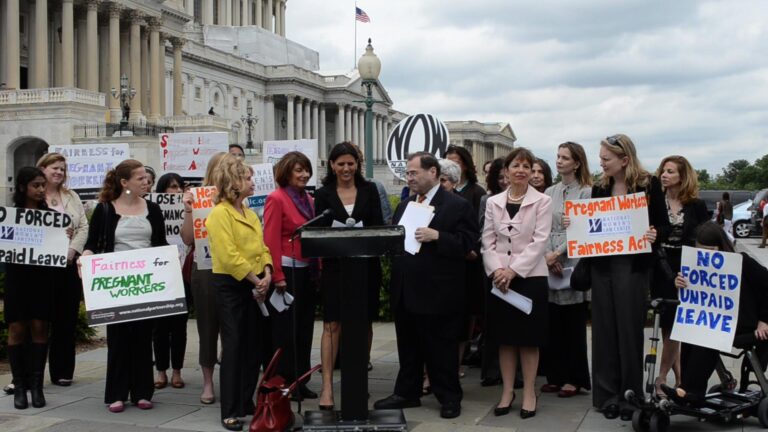Benjamin Levin is an Associate Professor at the University of Colorado Law School. Before entering academia, he clerked on the U.S. Court of Appeals for the Third Circuit and on the U.S. District Court for the Northern District of New York. He also worked on police and prosecutorial misconduct cases at Neufeld Scheck & Brustin, LLP. Before joining the CU Law faculty, he taught at Harvard Law School as a Climenko Fellow and Lecturer in Law.
For decades, activists, advocates, and academics have decried mass incarceration and its harms. At least 70 million people in the United States have some form of record — a record that carries with it numerous collateral consequences and marks its bearer as a target for discrimination and exclusion.
In the labor market, people with criminal records struggle to find work. Studies have shown the significant barriers to entry that previously incarcerated people face when applying to jobs and have emphasized the particular harms that accrue across lines of race and class. And, activists have strived tirelessly to overcome or eliminate these barriers.
But, the path forward remains unclear — will “ban the box” policies go far enough? What about tax incentives for employers? Are mass expungements feasible? Even with expungements, what if employers continue to ask about criminal records? And, how do each of these policies interact with other forms of workplace discrimination?
Last month, criminologists Peter Leasure and Robert Kaminski offered more data for anyone concerned about answering these big questions in a new study in the Journal of Empirical Legal Studies on “The Effectiveness of Certificates of Relief.” Their findings were troubling, but (sadly) not terribly surprising. And, they help demonstrate the problem of relying on back-end half measures to address the festering wounds caused by our systems of mass criminalization and punishment.
In their study, Leasure and Kaminski look at one specific policy tool designed to aid in the reentry process and help people with criminal records find work: certificates of relief. Leasure and Kaminski look at Ohio’s “certificates of qualification for employment” (CQEs). These CQEs (called “certificates of rehabilitation” in some jurisdictions) are supposed to signal that official actors—judges, correctional officials, prosecutors—have determined that the individual has been “rehabilitated” or is no longer a danger to society. CQEs also provide tort immunity to employers who might otherwise be liable under a negligent hiring theory for misconduct by their employees. Because the employee holds a CQE, the logic goes, employers would reasonably believe that the worker is no more likely to behave badly than an employee without a criminal record.
CQEs have attracted less advocacy attention than some other approaches like ban-the-box policies, record clearing programs, or legislative repeals of employment restrictions. That may be in part because CQEs are less ambitious: employers can still access applicants’ criminal records, and legislation that restricts the employment (or rights, more broadly) of people with criminal records remains in effect. In other words, CQEs offer a sort of compromise position that might make them attractive to employers and less likely to arouse opposition from a tough-on-crime crowd concerned about the danger posed by the previously incarcerated.
But do CQEs actually work? Leasure and Kaminiski’s study suggests that they don’t.
In their study, Leasure and Kaminski deployed a “correspondence audit.” For those of us who aren’t social scientists, that means they sent resumes to a bunch of employers to see which job candidates received offers and which didn’t. The resumes were meant to reflect applicants of different races (Black and white) and different categories of criminal history: (1) people with no record; (2) people with a record; and (3) people with a record and a CQE. Notably, the study focused on individuals with multiple convictions for different types of crimes, reflecting the troubling reality of concentrated enforcement and criminalization.
Leasure and Kaminski found that the people with no record fared much better than both of the other groups. Disappointingly, there was no statistically significant difference between the treatment of people with CQEs and those without. (Interestingly, the people with CQEs actually fared worse, but Leasure and Kaminski stress that the difference was not statistically significant and so we should avoid drawing conclusions from that result.) Even more disappointingly, Black applicants fared worse than their white counterparts across each group of applicants.
So, what should we make of these findings? Perhaps, Leasure and Kaminski speculate, employers simply don’t understand CQEs, and greater education might do the trick. (Personally, I’m skeptical.) Or, Leasure and Kaminski suggest, perhaps CQEs don’t go far enough and signal the need for additional policy interventions either to supplement CQEs (e.g., bonding or tax credits) or replace them (e.g., ban-the-box laws or record sealing).
I fall firmly in the “CQEs don’t go far enough” camp. Indeed, my reading of this valuable study is that it demonstrates the limitations of relying on after-the-fact half measures to address the inter-woven problems of mass incarceration and racial discrimination.
Once someone is caught up in the wheels of the criminal system, reversing course is a tall order. While it’s critically important that—as a society—we work to address the problem of reintegration following criminal punishment, reentry is a pretty late stage for broader institutional engagement with issues of social marginalization. Too late, I’d say.
Indeed, it should come as little surprise that a society that invests vast sums of money into the criminalization and incarceration of race-class subordinated populations is also a society where people are wary of hiring members of those populations. Mass incarceration rests on a logic of exclusion: dangerous individuals must be taken out of circulation so that the rest of us can be safe. Criminal codes and sentencing schemes reflect a view that past convictions make an individual more culpable and more dangerous. It’s no wonder, then, that this logic carries over into the labor market. And, as Leasure and Kaminski show, overcoming those fears and prejudices will take more than a CQE.
Bipartisan criminal justice reform efforts often focus on reentry. In a system beset by problems, the task of reintegrating people into society tends to attract support from disparate groups. Yet, reentry offers a limited frame for addressing the structural exclusion created by mass incarceration.
Political scientist Marie Gottschalk has argued that mainstream “criminal justice reform” efforts can’t possibly do the radical work necessary to dismantle the carceral state if they remain focused on reentry and rehabilitation. Gottschalk (like other radical activists and scholars) has suggested that the only way to solve these problems of exclusion and marginalization is to shift our frame. Rather than focusing primarily on providing support after the fact, why not focus on the front end?
To be clear, none of this is to say that jurisdictions shouldn’t pass ban-the-box laws or that the vibrant activism by and on behalf of previously incarcerated job seekers shouldn’t continue. Rather, it’s to say that the most straightforward way of making sure that a person with a criminal record can get a job is to make sure that the person doesn’t have a criminal record in the first place. Decarceration and decriminalization should be imperative objectives because—as Leasure and Kaminski’s study shows—back-end fixes leave much to be desired.








Daily News & Commentary
Start your day with our roundup of the latest labor developments. See all
June 30
Antidiscrimination scholars question McDonnell Douglas, George Washington University Hospital bargained in bad faith, and NY regulators defend LPA dispensary law.
June 29
In today’s news and commentary, Trump v. CASA restricts nationwide injunctions, a preliminary injunction continues to stop DOL from shutting down Job Corps, and the minimum wage is set to rise in multiple cities and states. On Friday, the Supreme Court held in Trump v. CASA that universal injunctions “likely exceed the equitable authority that […]
June 27
Labor's role in Zohran Mamdani's victory; DHS funding amendment aims to expand guest worker programs; COSELL submission deadline rapidly approaching
June 26
A district judge issues a preliminary injunction blocking agencies from implementing Trump’s executive order eliminating collective bargaining for federal workers; workers organize for the reinstatement of two doctors who were put on administrative leave after union activity; and Lamont vetoes unemployment benefits for striking workers.
June 25
Some circuits show less deference to NLRB; 3d Cir. affirms return to broader concerted activity definition; changes to federal workforce excluded from One Big Beautiful Bill.
June 24
In today’s news and commentary, the DOL proposes new wage and hour rules, Ford warns of EV battery manufacturing trouble, and California reaches an agreement to delay an in-person work mandate for state employees. The Trump Administration’s Department of Labor has advanced a series of proposals to update federal wage and hour rules. First, the […]